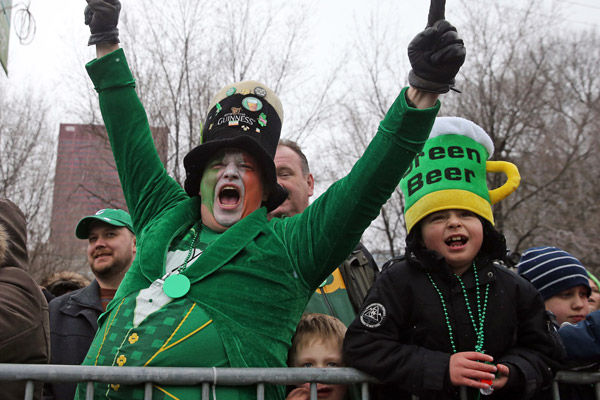
Brian Casella/Chicago Tribune
St. Patrick's Day Parade, March 16, 2013
To celebrate St. Patrick's Day, Trulia chief economist Jed Kolko looked at America's most Irish towns. Number one is Boston, as you might expect, the only metro over 20 percent Irish. Neighboring Middlesex County, Massachusetts comes in second, then Peabody, Massachusetts.
After that it's all northeastern metros, some that surprised me (Camden), some that didn't (Long Island). Notably missing? Chicago, which is nowhere in the top 10. 60655, a zip code in Mount Greenwood, comes in at an impressive 40.7 percent Irish—self-reported as "first ancestry"—good for fourth place in America's most Irish neighborhoods, but beyond that we're not as Irish as you might think.
Most of the counties in New England come in at 10 percent or more, as do some of Chicago's collar counties. Not that many zip codes in Chicago are that Irish—outside of 60655, no zip code comes in at more than 20 percent Irish, and it takes over 37 percent to crack the country's top ten. (60631, the far northwest zip that includes Norwood Park and Edison Park, almost gets there, at 19.5 percent.)
As a whole, Chicago's only 5.2 percent Irish.
If you expand that out to Cook County, it rises to 6.7 percent, about the same as the rest of Illinois (not to mention Nevada). I used to feel out of place when St. Patrick's Day reared its sometimes-ugly head, especially since I married into a South Side, part-Irish family. But then I learned that Germans—the bulk of my ancestry—is outnumbered by a mere 1,500 sons and daughers of Eire, according to the American Community Survey estimates.
Where'd all the Irish go? Will County, apparently, which is 11 percent Irish; DuPage (10 percent); Grundy (13 percent); and Livingston (10 percent). In other words, the South Side Irish just kept moving south and west.
Here's how Chicago breaks down, according to the 2011 numbers.



